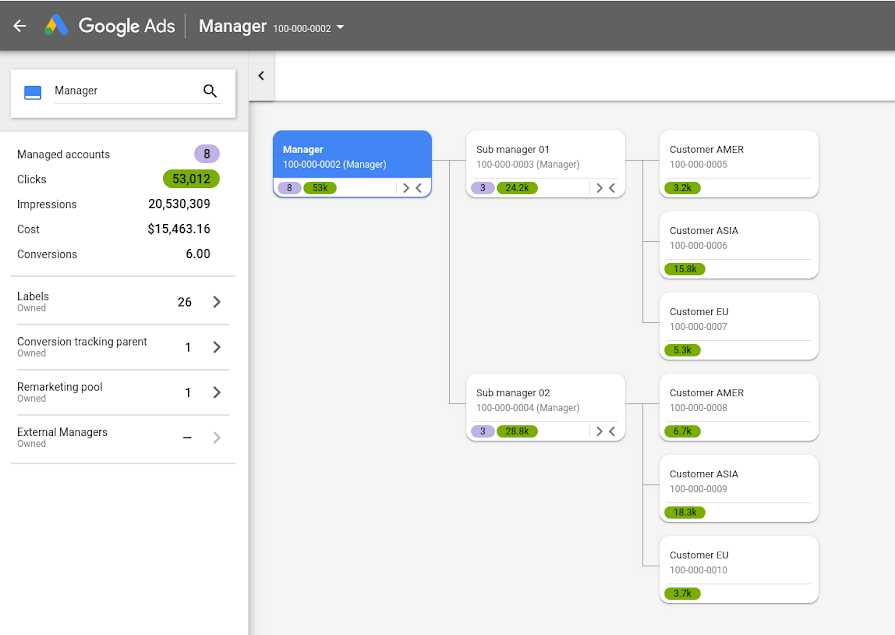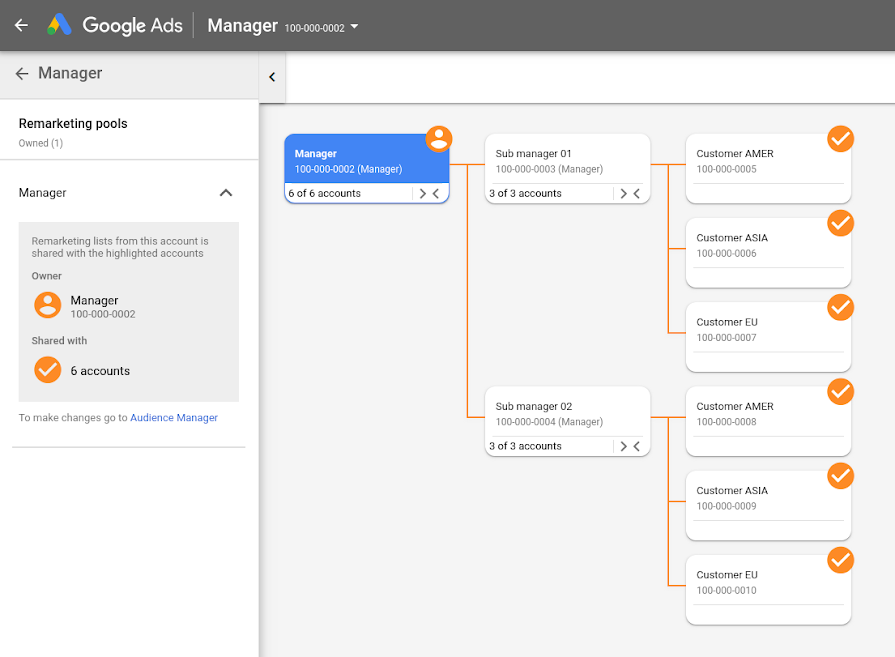Subscribe now and get the latest podcast releases delivered straight to your inbox.
Google Ads Launches Account Maps to Make Managing Multiple Accounts Easier

By Iris Hearn
Aug 14, 2019

If you’re working at an agency or a large company with multiple Google Ads accounts, you likely already have a Manager Account.
Google Ad’s Manager Accounts allow advertisers to manage several different Google Ads accounts from one centralized location. Through a manager account, users can not only link up multiple sub-accounts, but also the individual ad accounts within those sub-accounts.
While this capability certainly helps advertisers operate more efficiently, it’s easy to see how someone working with, say, five different clients all with multiple sub-accounts and sub-categories within those sub-accounts could find it difficult to organize their data and workflow.
Luckily, Google has recognized that pain point and has introduced a new feature that will help advertisers better visualize the accounts they’re working in: Account Maps.
Previously, advertisers did not have a clear way to organize their managed accounts within the tool. Not only was viewing the actual structure of managed accounts difficult, but so was viewing performance across the different accounts.
Because this required clicking through multiple screens to gather this data, monitoring or comparing performance against these multiple accounts could not be done without the help of spreadsheets or another outside system.
Now, account maps offer a way for advertisers to easily see all of the managed accounts they’re working under in an easily digestible chart.
How do account maps work?
When you view your managed Google Ads accounts, you’ll now see the data relayed in the following chart:

As you can see, the map’s org-chart style displays the user’s main account, any sub-accounts off of that, and the individual accounts or campaigns linked from there.
Not only is the map a great visualization of account structure, but it also provides real-time performance metrics for each subset, showing clicks, impressions, cost, and conversions.
These high-level metrics are a great way for advertisers to gauge how each individual player is performing both on its own — and in comparison to the bigger picture.
Account maps also show what commonalities sub-accounts share, like remarketing lists, external managers, account-level labels, or conversion actions.

This information can be helpful for users who are trying to make widespread changes, like making sure the right people are added (or deleted from) a group of accounts, uploading new remarketing lists, or updating a conversion action. Before account maps, users would have to click into each individual ad account and check for the presence of these attributes to see commonalities.
Account maps can also help advertisers see higher-level insights that may have not been apparent when digging deeper into the data. For example, a user may notice that one sub-account is performing better than another, and see that the higher-performing accounts are using a specific remarketing list that is driving more clicks back to the website.
Such insights can help advertisers make clearer, more data-driven decisions without spending excess time pulling each data set from its source.
Final thoughts
This change may seem small, but for advertisers juggling several campaigns at once from different places, I’m sure it will make a world of difference for virtually every asset of their day-to-day — from organizing quarterly performance reports to simply planning their daily workload.
More and more, we’re seeing marketing platforms make a bigger push for centralizing data in a more easily-digestible manner — and for good reason.
We now have access to so much data that it’s almost an administrative task to dig through it all. At first glance, keeping data separate makes sense — until you realizing that all of the clicking back and forth between reports can really add up, which can result in a big time-suck for advertisers.
Not only is time a factor, but the need to view different reports on different pages can cause users to miss high-level metrics or insights that can really help shed light on the bigger picture.
Of course, there are existing tools like Databox to help marketers view these high-level insights in one location, but there is a clear benefit to having this data directly on the platform so users can dig in to learn more.
Data-driven decision making is vital to successful marketing campaigns, and updates like these help marketers bring that information front and center.
Users can access the account maps starting today by navigating to the “Tools and Settings” menu, or alternatively by viewing the Accounts page in their Google Ads manager account.
Free: Assessment